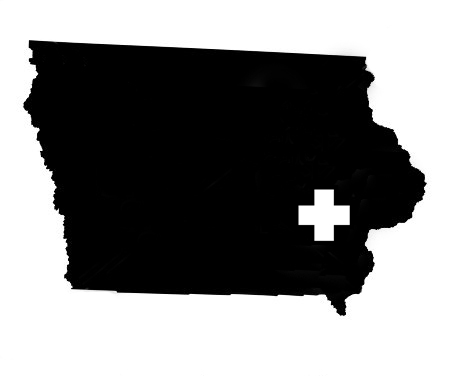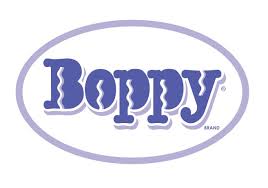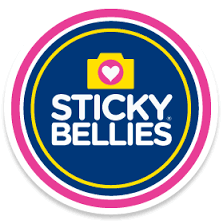Home Cleanse Day 4: Organize
Your goal will be this: have a *place* for everything. Ideally, in a box or container of some sort. This makes it easier to consistently return items to their place and to seriously evaluate whether you have room for new items when the desire hits. You can use shoeboxes (lids too), moving boxes, old mismatched Tupperware or bins. As we discussed in the purging post, don’t go run out and buy new containers the day of your purge. If you think you do need containers because you don’t have enough at home, sit on this thought for a few days and ensure you really need them and can’t actually just purge a bit more or relocate some items. Some previously occupied bins may become freed up as you complete your purge, too.
Once you’ve determined you do indeed need a new container, and your budget allows, go for it. If you can afford to be picky, clear containers are always preferred so that you can see what you have. If your budget does not allow, join your local Buy Nothing group on Facebook (mentioned in yesterday’s donation post) and make a post asking for boxes and containers. You will be surprised with how generous the community can be.
Common visible places that you may want to create:
- A small drop zone for keys, mail, wallet, and your spouse’s pager. Ideally, this is out of sight, but that is usually rare for most folks. Make sure it’s very close to your door or else it won’t be used.
- A pretty container for the items that live next to your sinks (in the bathroom, this may be soap, lotion, and a room spray; in the kitchen, this may be hand soap, dish soap, sponge, and your all-purpose cleaner if you use it daily for your countertops).
- Bins as-needed for children’s toys that you have elected to keep in sight (Melissa and Doug wooden crates are great for this). This is only for toys that genuinely need to be contained, like legos, not a pile of 20 vehicles. Display four or five current favorite vehicles, and put the rest out of “rotation” in storage or get rid of them.
- A small drop zone for mail and bills to be handled (visit the purge post section on papers when considering this).
- A box of stationery (thank you notes and birthday/baby/wedding cards that you stock up on from Home Goods or Trader Joe’s… or is that just me)
- Storage bins for Tupperware, snacks, spices, nuts/dried fruits, etc if you think you can keep up with it
- Medicine/first aid bins
- Bins for your regularly used toiletries under your sink
- Low-sided containers for makeup and jewelry (there are some awesome stackable jewelry kits at The Container Store if you’re ready for a splurge).
- Cleaning product bins (I recommend one for under the sink, one for above the washing machine, and one for the garage).
- Backstock boxes (if you truly need a backstock area). This may include one for guest and travel toiletries, cleaning supplies, food, paper towels and toilet paper. However, there is no need to create these spaces if you don’t truly need them.
- Shoe storage. Ugh. I hate dealing with shoe storage, but it’s a necessary evil. We keep our in-season shoes in the coat closet, and out-of-season shoes in bedroom closets. I have made an exception and put one basket out and visible for my kids’ shoes (two pairs for each kid) so they are more likely to put them away by themselves.
- Large storage bins for your basement storage. In my basement, we have the following storage bins:
- One for each family member’s sentimentals
- Three bins of kids clothes in soon-to-be-used sizes
- One bin of baby items (bottles, swaddles, toys, etc.)
- Three bins of Christmas décor
- One bin of non-Christmas holiday décor
- One bin for currently unused home décor that I 100% intend to use in our next home
- One bin for summer toys to live in the winter
- Smaller bin for pictures
- Smaller bin for party supplies
- Smaller bins (4) for craft supplies (I’m a crafter; you may not need this at all)
- A box that lives in the corner of your closet for you to dump future items that you decide to purge.
A few of my favorite tips
In no particular order, for your consideration:
- Organizing items in rainbow order (like The Home Edit does) is surprisingly pleasing. I think it is most useful in two spaces: in your closet, and for children’s books. Once making this change in your closet, it is easy to maintain because you see easily where a recently used/washed item fits back in. I was worried when I hung my husband’s navy hoodie next to his navy polo instead of with his other hoodies and sweatshirts, but it actually has helped him really assess his whole wardrobe and he wears a much bigger variety of his clothes now. In terms of the children’s book suggestion, I think it helps them more easily find books they like and return them during clean-up time.
- Aim to hang as many clothing items in your closet as possible. This lets you see what you have most readily, and depending on your closet size and quantity of clothes, you may be able to get rid of your dresser entirely (in this case, you'll need a couple shelves and sets of containers in your closet for items that can't be hung).
- It is your choice whether you choose to display all seasons of clothes in your closets/drawers. I made a goal to purge enough that I could comfortably display all seasons, but I could see how that would be annoying to some people to have a bunch of things in their closet that they won’t be wearing for six months. Choose what works for you, but if you do choose to keep your out of season items out of sight, don’t let it become an excuse for keeping more than you need.
- If you have to have paper towels and toilet paper in a visible spot (I do, because my laundry room is also my main floor bathroom), display them unwrapped. It’s surprisingly pretty.
- Beautiful pantry pictures are super trendy right now, but consider how active you will truly be in moving items out of their bags, etc, and into a new bin. You may totally embrace this and do it when you get home from the store every time, and you might not. Again, make sure you choose something that fits in to your lifestyle. I suggest starting out small by getting two or three bins for your pantry to hold your bags of fruits/nuts, small snacks, etc. Also consider choosing some produce savers to keep in your fridge, if you think you’ll be good about washing and moving your produce into them when you come home from the store (otherwise, you never will). I did really enjoy moving some of my lesser used dry items (beans, grains, pasta) into large mason jars. They can be super cheap at garage sales, and I scored a ton for 50 cents each at the Crowded Closet thrift shop in Iowa City.
Fun items to consider
Remember, this is only for when you’ve taken some time to confirm you need them and/or they will bring you joy, and for when your budget allows:
- Clear organizers for craft products
- Small lazy susans for your spices and baking products
- Separators for your pans and bakeware (you can place them vertically or horizontally depending on your space)
- Jewelry organizers (preferably the little velvety ones with a square spot for every piece)
- Mesh toy bags to hold sets of toys rather than having to keep boxes for everything
- Paper towel holder
- Glass spray bottle for your most frequently used all-purpose product (this may be worth storing in sight, on the counter)
- Specialized holiday storage bins like those for wreaths, lights, ornaments, and wrapping paper
- For when you’re really all-in and you know you’ll keep up with it, you can do the full kitchen splurge and get clear containers for everything. If you want to start smaller, begin with mason jars from thrift stores (I prefer wide mouth mason jars), move to just a couple clear bins, and then to produce keepers before going all-out.
Sign up for a time to have some donations brought to the Shelter House if you so choose. Please sign up before Oct 23rd. We will come get them from your door Oct 25th and 26th. The link also has a list of eligible items, as does yesterday’s blog post and our FB event. https://www.signupgenius.com/go/70A0444A4AD2FA2FF2-shelter
Tomorrow, we’re on to cleaning!

 RSS Feed
RSS Feed






